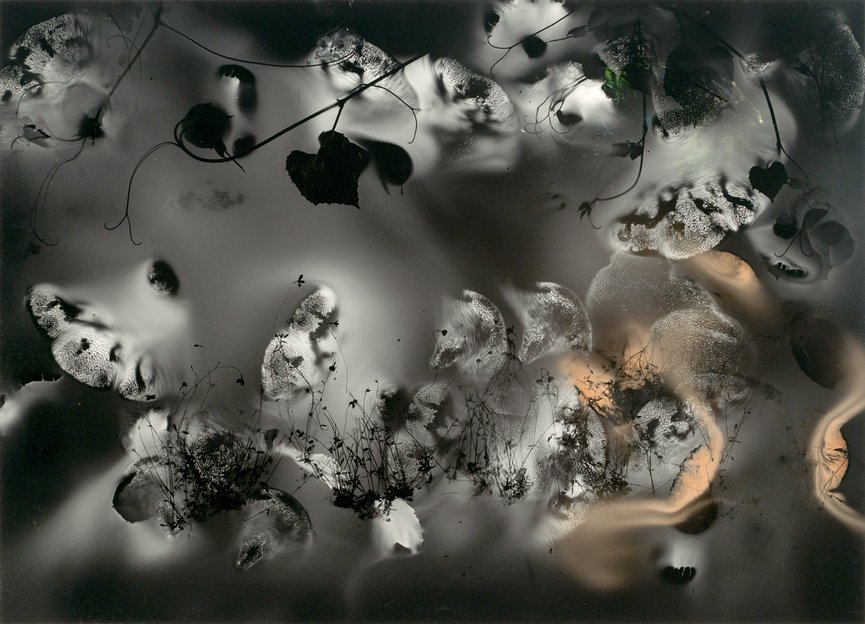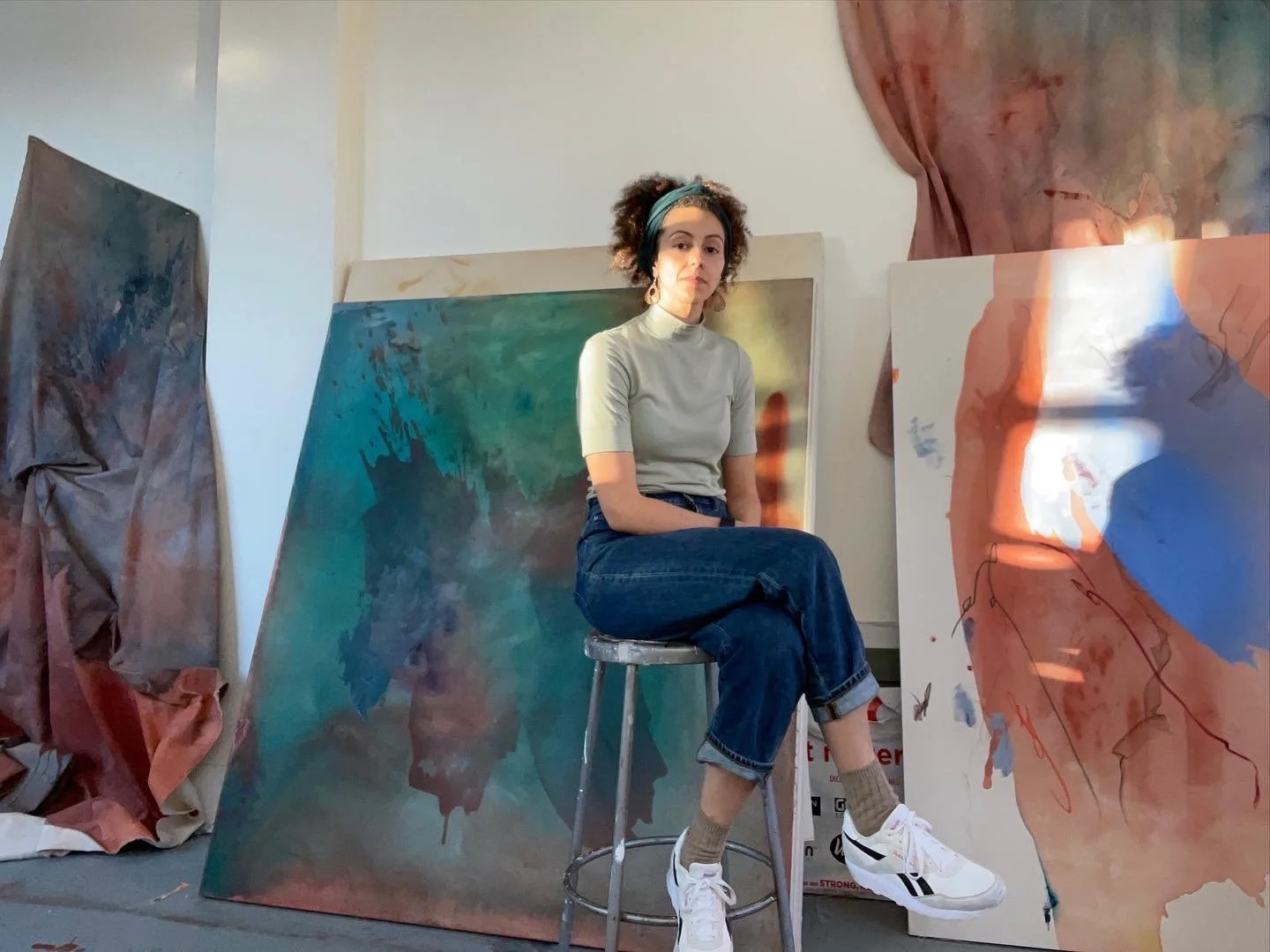“Kenai Herbarium” by Madge Evers
Madge Evers is an educator, gardener, and visual artist whose work celebrates decomposition and regeneration. She has been paying close attention to fungi since 2015, when she began making mushroom spore print art. Referencing photosynthesis and the ancient collaboration in mycorrhiza, her practice involves foraging for mushrooms and plants, and sometimes includes the cyanotype process and paint. In 2021, she was a Mass Cultural Council fellowship finalist in photography. She has attended artist residencies on Cape Cod and Maine. Current residencies at Mount Auburn Cemetery and the Kinney Renaissance Center at UMass allow Evers to interact with landscapes and their histories. After teaching for 25 years in Rhode Island and Massachusetts public schools, she now works as a full-time artist.
BMAC spoke with Evers about “Kenai Herbarium,” on view through February 12, 2023, as part of the exhibit Madge Evers: The New Herbarium.
Kenai Herbarium (2019)
Wild Rose, Horsetail, Yarrow, Fireweed, mushroom spores on paper
20 x 28 inches
Using spores as a zero-waste art medium appeals to me as a gardener and composter: Mushrooms decompose. When I forage for materials, I engage in an interspecies relationship with fungi. Like the wind and other animals, I spread the spores of mushrooms; I germinate those powdery spores into a fruiting body that takes the form not of a toadstool, but of a two-dimensional image on paper. Mushrooms help me make visible a process that goes unnoticed—by human eyes, at least.
Seeds for The New Herbarium series were planted when I saw Emily Dickinson’s Herbarium for the first time in early spring of 2019. From Dickinson’s delicate handwriting and the familiar pressed plants, I gained a new understanding of the constancy of growing cycles. The form of my herbaria work started to take shape during a walk in Northampton on a rainy June day in 2019. There, in the cracks and along the sidewalk, plants were busting out all over. The word “fecund” came to mind, an impulse powerful and lovely. Tendrils of Frost Grape Vine were raising their arms, literally waving at me. Lush greenery spoke of purpose, lives well-lived. I wanted to pay homage to their spring bursting, their summer gathering of energy, their fall retirement, and their winter waiting. I had a desire not to capture all of these stages, but to depict the perfect, strange beauty of plants. And it began.
Amanita mushroom from the Kenai Peninsula, Alaska.
The Kenai Herbarium work originated that August when I visited Alaska. June and July of 2019 were Alaska’s hottest on record. Amanita mushrooms grew in my host’s yard in Soldotna on the Kenai Peninsula. The mushrooms humbled me, as they often do; but they did not release their spores, and I was not going to be making an Alaska spore print. Still, I collected plants whose forms, some familiar, connected me to this novel landscape. Then the skies around Soldotna turned hazy. The Swan Lake Fire burned 167,164 acres of land on the Kenai Peninsula that summer. We drove along a road until firefighters stopped cars. There, we watched the trees flame orange, then ash. I returned to Massachusetts with the Alaska plants. I foraged for mushrooms close to home and found several varieties, including Jack-O’-Lantern/Omphalotus illudens. Their presence in the Kenai Herbarium helps me depict Fireweed/Chamerion angustifolium, Horsetail/Equisetum arvense, Yarrow/Achillea millefolium, and Wild Rose/Rosa multiflora.
Smoke-filled Kenai sky
Evers with Fireweed
Fireweed grows in much of North America and is named for its ability to rapidly grow in areas burned by fire. It was one of the first plants to emerge after the eruption of Mount St. Helens and in areas around London bombed in World War II. The stems of Horsetail ferns, but not the leaves, are photosynthetic. Like fungi, ferns reproduce through spores. Horsetail has been around since the time of the Jurassic. Yarrow possesses medicinal properties and was used by Achilles and his army to staunch the bleeding of wounds. Druids believed Yarrow imparted second sight and helped in finding one’s true love.
Another delicate presence in this Herbarium is that of worms who hatch in the gills of mushrooms, fall onto paper, then crawl through the spores, creating marks. They also leave their nitrogen-rich slime imprint on the picture’s surface—more unwitting marks, more interspecies collaboration.
The Kenai Herbarium suggests a changing landscape—a wilderness so vast as to seem unending, but also a place where fire consumes swaths of forest and glaciers melt and fall into the sea. Operating amidst this chaos are tiny worms, transformative fungi, and the reliable, flexible, perfect plants.
Limited edition archival inkjet prints of two of Evers’ works, “A Soft Spot” and “Bluets in June”, are available in the BMAC Gift Shop.
RELATED RESOURCES
Virtual Tour
Installation shots
Have a question for Evers? Ask the Artist!










